
Domain of Combinations of Functions Video 4
Finding the domain of a function with a root and a logarithm in the denominator

Finding the domain of a function with a root and a logarithm in the denominator

Explaining how to solve equations with power and exponential terms

Solving equations with exponential terms

Solving equations with base e exponential terms

Explaining the basic properties of logarithmic functions

Explaining how to solve logarithmic equations

Solving logarithmic equations with a single logarithm term

Solving logarithmic equations with multiple logarithm terms

Solving logarithmic equations with multiple logarithm terms on both sides

Evaluating a logarithm inside an exponential function

Solving an equation an exponential function

Solving an equation with exponential functions

Solving an equation with a logarithmic function

Solving an equation with several logarithmic functions
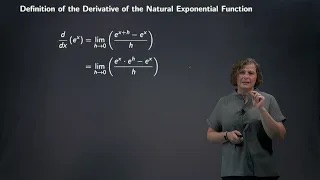
Explaining the formulas for the derivatives of exponential functions

Using logarithms to transform an exponential function to a linear function

Using the formula to change the base of a logarithm

Using the formula to change the base of a logarithm

Using logarithmic differentiation to find the derivative of a function

Using logarithmic differentiation to find the derivative of a function

Using logarithmic differentiation to find the derivative of a function

Evaluating a limit with an indeterminate power using L'Hospital's Rule

Evaluating a limit with an indeterminant power using L'Hospital's Rule

Proving facts about logarithms and exponentials including the derivative of an exponential with an arbitrary base

Expanding logarithmic expressions using logarithm rules

Condensing a logarithmic expression into a single logarithm

Solving an equation with logarithmic functions

Solving an equation with logarithmic functions

Solving an equation with logarithmic functions

Solving an equation with logarithmic functions

Solving an equation with logarithmic functions

Writing logarithmic equations in exponential form

Solving equations with exponentials and logarithms

Solving equations with exponentials and logarithms

Solving equations with exponentials and logarithms

Solving a equation with an exponential function

Solving an equation with two exponential functions with different bases

Solving an equation with exponential functions by factoring

Solving a equation with exponential functions by factoring

Finding the domain of a function containing a logarithm, exponential, and fraction

Expressing a combination of logarithms as a single logarithm

Finding the domain, range, end behavior, and intercepts for a logarithmic function

Finding the domain of a function containing a logarithm, exponential, radical, and fraction

Using properties of logarithms to determine whether a statement is true or false

Using properties of logarithms to determine whether a statement is true or false

Finding the derivative a function with a power, exponential, and logarithm

Using the Generalized Exponential Rule to find the derivative of a function

Using logarithm properties to simplify before using the Chain Rule to find a derivative

Using logarithm properties to simplify before using the Generalized Logarithm Rule to find a derivative

Finding the derivative of a function that requires logarithmic differentiation

Using the alternate form of the Chain Rule to find the derivative

Solving an indefinite integral by first simplifying the fraction

Calculating a derivative of a quotient with an exponential function
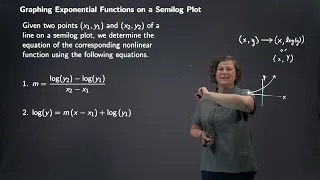
Explaining the logarithmic scale and a semilog plot

Using logarithms to transform a power function into a linear function

Writing a non-linear function to represent the line graphed on a semilog plot

Using the second derivative to find the maximum rate of change in a word problem

Simplifying logarithmic expressions using the properties of logarithms

Determining the properties of a logarithmic function

Determining the graph of a logarithmic function

Determining the properties of a logarithmic function

Determining the graph of a logarithmic function

Using the properties of logarithms to expand a logarithmic expression

Using the properties of logarithms to expand a logarithmic expression

Using the properties of logarithms to condense the expression as a single logarithm

Using the properties of logarithms to condense the expression as a single logarithm

Solving an equation with an exponential function

Solving an equation with an exponential function

Solving an equation with an exponential function

Solving an equation with exponential functions by factoring

Modeling a population size with an exponential function

Derivatives of exponential functions and the exponential model

Mean Value Theorem and using derivatives to find the shape of curves

Derivatives of exponential and logarithmic functions and the exponential model

Derivatives of exponential and logarithmic functions and the exponential model

Using L'Hospital's Rule to solve limits

Using Reimann sums and the Fundamental Theorem of Calculus

Using Riemann sums and the Fundamental Theorem of Calculus

Examples of integration by substitution

Using the Product and Chain Rules to differentiate functions with logarithms

Differentiating functions with logarithmic and inverse trigonometric functions

Using logarithmic differentiation to find the derivative of a function

Using logarithmic differentiation to find the derivative of a function

Evaluating a limit using L'Hospital's Rule

Antidifferentiating twice to find a function from its second derivative

Antidifferentiating to find a function from its derivative

Antidifferentiating twice to find a function from its second derivative

Antidifferentiating twice to find a function from its second derivative

Using antidifferentiation to find the height of a cliff from the impact speed of a dropped stone

Evaluating a limit using logarithm properties

Evaluating a limit using L'Hospital's Rule

Evaluating a limit with an indeterminant power using L'Hospital's Rule

Evaluating a limit at infinity by combining logarithms

Finding a derivative using the Chain Rule and Product Rule

Using logarithmic differentiation to find the derivative of a function

Evaluating a definite integral with an exponential and sine function

Determining if a sequence is increasing, decreasing, or not monotonic and if it is bounded

Finding a power series representation for a function

Solving an improper integral where the upper limit of integration is infinity

Derivatives of exponential functions and the exponential model

Mean Value Theorem and using derivatives to find the shape of curves

Derivatives of exponential and logarithmic functions and the exponential model

Using L'Hospital's Rule to solve limits

Using Reimann sums and the Fundamental Theorem of Calculus

Using Reimann sums and the Fundamental Theorem of Calculus

Examples of integration by substitution

Performing basic numerical calculations in Python
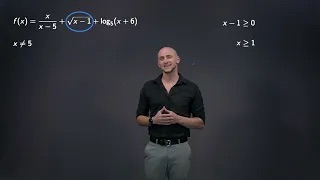
Finding the domain of a function with a denominator, square root, and logarithm

Finding the domain of a function with a natural logarithm and denominator

Explaining domain restrictions for denominators, even roots, and logarithms
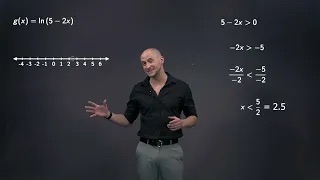
Finding the domain of a logarithmic function
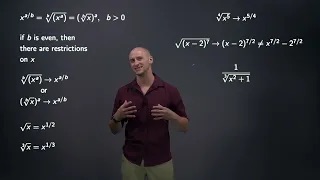
How to rewrite radical terms as power terms
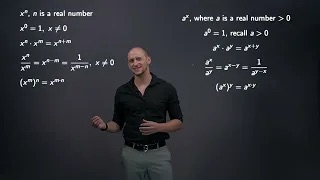
Properties of exponents applied to power and exponential expressions

Properties of multiplying and simplifying power and exponential expressions

Properties of exponents applied to power and exponential expressions

Properties of exponential growth and decay functions

Properties of the exponential function with base e

Simplifying power and exponential expressions using properties of exponents

Simplifying power and exponential expressions using properties of exponents

Simplifying an expression with both power and exponential functions using properties of exponents

Finding the limit of a sequence using logarithm properties

Using properties of logarithms to write an expression as a single logarithm

Finding the composition of two functions with exponentials and logarithms

Expanding a logarithmic expression using logarithm properties

Condensing logarithmic expressions into a single logarithm

Finding the exact value of logarithms using logarithmic properties

Finding the vertical asymptote of a logarithmic function

Finding the vertical asymptote of a logarithmic function

Finding the domain and x-intercepts of a logarithmic function

Finding the domain and x-intercepts of a logarithmic function

Solving a logarithmic equation using properties of logarithms

Solving a logarithmic equation using properties of logarithms

Finding the properties of an exponential function including domain, range, end behavior, and intercepts

Finding the properties of an exponential function including domain, range, end behavior, and intercepts

Finding the properties of an exponential function including domain, range, end behavior, and intercepts

Finding the domain of a function that is a fraction containing an exponential and root

Finding the domain of a function that is a fraction containing an exponential and root

Finding the domain of a function that is a fraction containing exponentials and a square root

Solving an equation with exponential functions

Solving an equation with exponential functions

Calculating how much to invest with continuously compounded interest

Identifying the parent function and transformations for a given graph

Identifying the parent function and transformations in order for a given function

Finding the domain of a function containing several logarithms

Solving the limits approaching infinity and negative infinity with exponential functions in the numerator and denominator

Finding the horizontal asymptotes of a function that is a fraction with exponentials in the numerator and denominator

Determining where a function with a fraction, square root, and logarithm is continuous

Finding a derivative of a function with a logarithm using the Product Rule

Finding the derivative of a function with a square root and exponential using the Product Rule

Finding the derivative of a fraction with an exponential using the Quotient Rule

Finding a derivative using both the Product and Quotient Rule

Finding the derivative of a function using the Generalized Power Rule

Using the chain rule to find derivates with some values given in a table

Using implicit differentiation to find the derivative of a function

Finding the antiderivative of a function

Evaluating an indefinite integral with an exponential

Solving an indefinite integral with an exponential function suing u-substitution

Solving an indefinite integral with a natural logarithm using u-substitution

Solving an indefinite integral with exponentials in a quotient using u-substitution

Using u-substitution in an indefinite integral to find a function from its derivative and a given vaue

Calculating the derivative of a function with exponentials using the chain and product rule

Explaining exponential functions in discrete time

Solving a population example of exponential growth in discrete time

Solving a population grown example on recurrence equations

Explaining the definition of logarithmic scale and double-log plots

Writing a non-linear function for the graph containing two points on a double-log plot

Determining properties of an exponential function

Determining properties of an exponential function
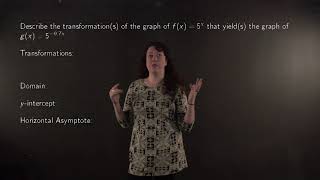
Determining properties of an exponential function

Identifying the graph of an exponential function

Solving an equation with an exponential function

Determining properties of an exponential function

Review of limits and derivatives of inverse trigonometric functions

Review of limits and derivatives of inverse trigonometric functions

Antiderivatives and physics applications
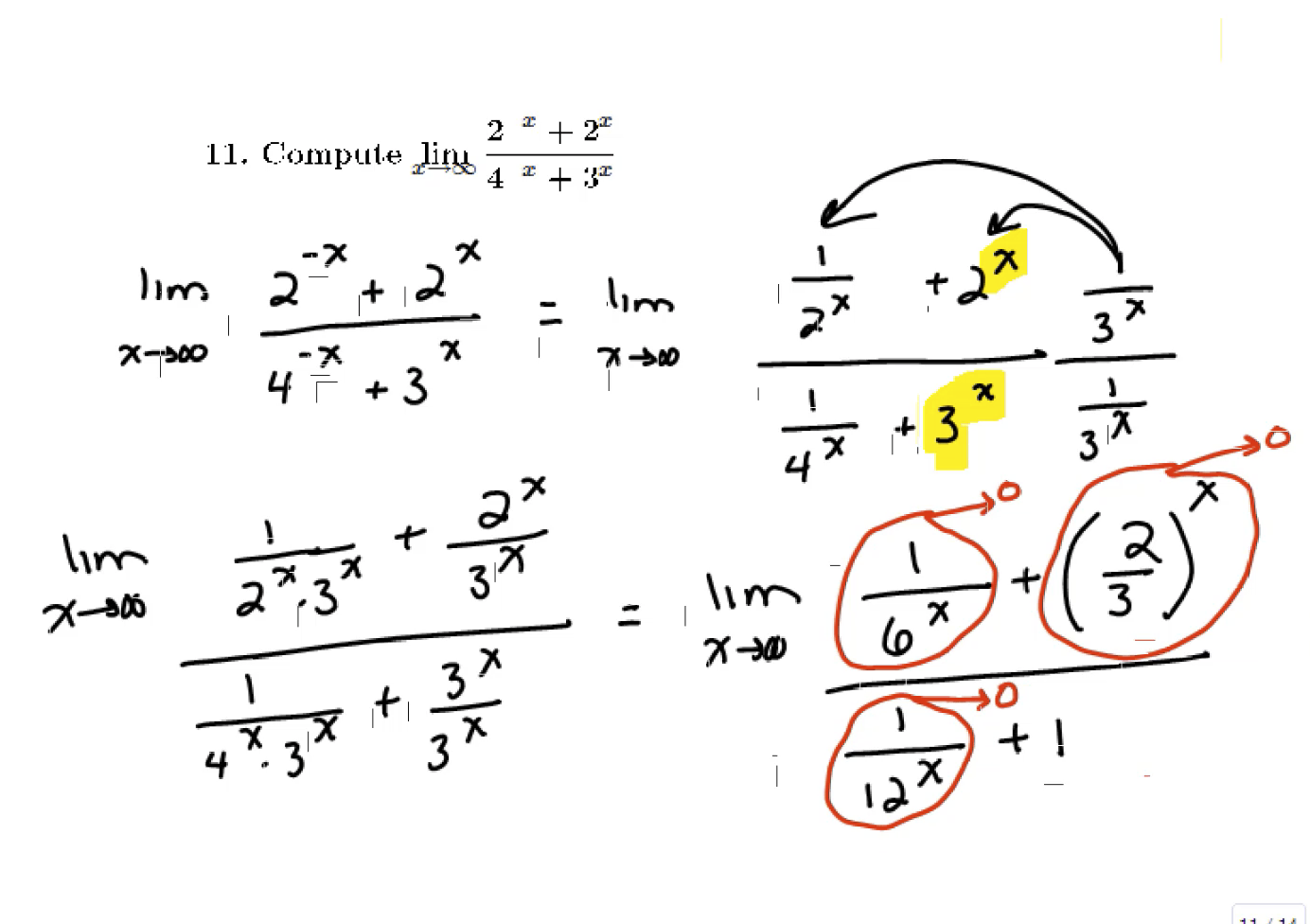
Approximation and Newton's Method, and limits and derivatives of exponential functions

Approximation and Newton's Method, and limits and derivatives of exponential functions

Using derivatives to find properties of graphs

Mean Value Theorem and properties of a graph

Mean Value Theorem and properties of a graph
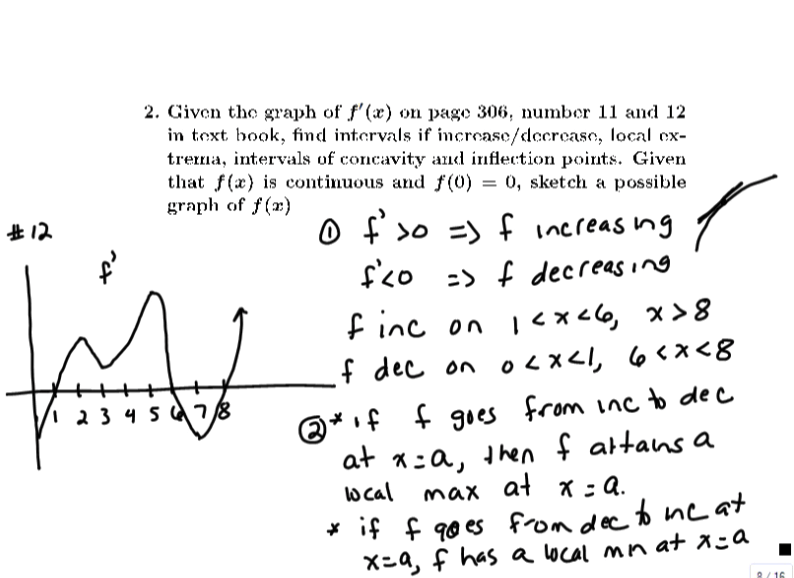
Using derivatives to find properties of graphs

Differentiating a function with an exponential function and using the Power Rule

Using the Product Rule to differentiate a function

Using the Quotient Rule to differentiate a function

Using the Product and Quotient Rules to differentiate a function

Using the Product Rule to find a first and second derivative

Using the Chain Rule to differentiate functions with exponential and trigonometric functions

Using the Chain Rule to find a first and second derivative

Using the Chain Rule to find the pattern for a higher order derivative

Finding the derivative using implicit differentiation

Finding the derivative of a function containing a logarithmic function

Finding the derivatives of functions containing logarithms

Finding the derivative of a function containing a logarithms

Finding the equation of a tangent line to a function containing a logarithm

Differentiating functions with inverse trigonometric functions

Finding the derivative of an implicit function

Finding the derivative of an implicit function

Using the chain rule to find a derivative

Using the Product and Chain Rule to find several derivatives

Using the Product, Quotient and Chain Rules to find several derivatives

Using the Quotient and Chain Rules to find several derivatives

Finding a number that satisfies the conclusion of the Mean Value Theorem on an interval

Evaluating a limit using L'Hospital's Rule

Evaluating a limit with an indeterminate product using L'Hospital's Rule

Evaluating a limit with an indeterminant difference using L'Hospital's Rule

Antidifferentiating twice to find a function from its second derivative

Evaluating a limit with an indeterminant product using L'Hospital's Rule

Finding the antiderivative of a function and using a function value to find the constant

Evaluating the limit at infinity of a fraction with exponential functions

Evaluating the limit at negative infinity of a fraction with exponential functions

Using u-substitution to evaluate an indefinite integral

Using L'Hospital's Rule to solve a limit with an indeterminant product

Using L'Hospital's Rule to solve a limit with an indeterminant difference

Using L'Hospital's Rule to solve a limit with an indeterminant power

Evaluating an indefinite integral by simplifying a fraction to powers of x

Evaluating a definite integral by first simplifying the integrand

Finding a derivative using the Quotient Rule

Review of estimating the sum of a series and the remainder

Review of using tests to determine if a series is absolutely convergent, convergent, and divergent

Review of improper integrals and the Comparison Theorem

Review of power series properties and writing functions as power series

Review of Taylor and Maclaurin Series and their properties

Review of Taylor Polynomials and Taylor's Inequality

Review of using tests to determine if a series is absolutely convergent, convergent, and divergent

Finding Taylor and Maclaurin Series for functions

Finding power series representations for functions and the radius and interval of convergence of the power series

Integrating an exponential function using u-substitution

Integrating a rational function using u-substitution

Integrating a rational function using u-substitution

Finding the area of a region bounded by curves

Finding the volume of a solid of revolution using the washer method

Finding the volume of a solid of revolution using cylindrical shells

Evaluating an integral using integration by parts

Evaluating an integral using integration by parts

Evaluating an integral using integration by parts

Evaluating an integral using integration by parts

Evaluating an integral using integration by parts

Evaluating an integral using integration by parts

Using the comparison test to determine if an improper integral converges or diverges

Determining if a sequence converges or diverges

Determining if a series converges or diverges and find the sum if it converges

Using the comparison test to determine if a series converges or diverges

Using the comparison test to determine if a series converges or diverges

Using the comparison test to determine if a series converges or diverges

Using the limit comparison test to determine if a series converges or diverges

Determining if a series is absolutely convergent, conditionally convergent, or divergent.

Determining if a series is absolutely convergent, conditionally convergent, or divergent.

Finding the interval and radius of convergence for a power series

Finding the Taylor polynomial of a function

Finding the length of a curve given by parametric equations

Finding the area of a region defined using polar coordinates

Solving an indefinite integral with an exponential function using integration by parts

Solving a definite integral with an exponential function using integration by parts

Solving an indefinite integral with a natural logarithm using integration by parts

Solving a definite integral with a natural logarithm using integration by parts

Solving an indefinite integral with an exponential function using integration by parts

Using integration by parts twice for an integral with sine and an exponential function

Using u-substitution to evaluate a definite integral with a natural logarithm

Using u-substitution on an indefinite integral with an exponential function, sine, and cosine

Using u-substitution to solve an indefinite integral with an exponential function

Solving an improper integral where the upper limit of integration is infinity

Solving an improper integral where the upper limit of integration is infinity

Review of limits and derivatives of inverse trigonometric functions

Review of limits and derivatives of inverse trigonometric functions

Antiderivatives and physics applications

Approximation and Newton's Method, and limits and derivatives of exponential functions

Examples involving the tangent line to an exponential function and finding the derivative of hyperbolic cosine

Approximation and Newton's Method, and limits and derivatives of exponential functions

Proving the derivative of ln(x) and the power and product rules using logarithmic differentiation

Using derivatives to find properties of graphs

Mean Value Theorem and properties of a graph

Mean Value Theorem and properties of a graph

Using derivatives to find properties of graphs

Proving L'Hospital's Rule and using it to evaluate limits

Using u substitution to evaluate integrals and prove facts about logarithms and integrals and

Review of estimating the sum of a series and the remainder

Review of using tests to determine if a series is absolutely convergent, convergent, and divergent

Review of improper integrals and the Comparison Theorem

Review of power series properties and writing functions as power series

Review of Taylor and Maclaurin Series and their properties

Review of Taylor Polynomials and Taylor's Inequality

Review of using tests to determine if a series is absolutely convergent, convergent, and divergent

Determining properties of sequences

Finding Taylor and Maclaurin Series for functions

Finding power series representations for functions and the radius and interval of convergence of the power series

Finding a partial fraction decomposition and integrating using partial fractions

Determining the domain of a three-dimensional vector function

Finding the limit of a three-dimensional vector function

Finding the position vector function given the velocity and an initial position

Finding and sketching the domain of a function of two variables

Finding the partial derivatives of a function of two variables

Finding the partial derivatives of a function of two variables

Finding all second-order partial derivatives of a function of two variables

Evaluating a double integral over a given region

Evaluating a double integral by reversing the order of integration

Evaluating a line integral along a curve

Evaluating a line integral along a curve in space

Finding the curl and divergence of a three dimensional vector field

Evaluating a surface integral of a vector field

Using Python to approximate a definite integral using left endpoint Riemann sums

Showing how the exponential function is the solution to an initial value problem

Finding the domain of even and odd roots
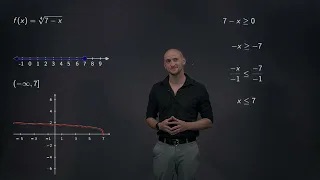
Finding the domain of functions with even and odd roots

Finding the domain of several rational functions

Finding the domain of a rational function

Explaining how to find any holes and vertical asymptotes of a rational function

Finding the domain of a rational function using factoring

Finding the domain of a function with a square root in the denominator

Explaining the main three forms for linear equations

Discussing properties of linear functions

Discussing the types of linear graphs including horizontal and vertical lines and their properties

Discussing how to write the equation of a line through two given points

Writing a linear equation of profit from a business word problem

Solving a linear equation algebraically and showing how this relates to the graph

Solving a linear equation algebraically

Solving a linear equation algebraically and showing how this relates to the graph

Explaining the format and possible solutions for a system of two linear equations

Solving a system of linear equations with two variables

Solving a system of two linear equations with two variables using the elimination method

Solving a system of two linear equations using a TI-84 calculator

Solving a system of two linear equations using a TI-84 calculator

Solving a system of two linear equations using a TI-84 calculator

Explaining the standard form for a quadratic equation and the possible number of solutions

Solving quadratic equations with the difference of two squares formula
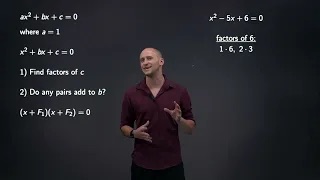
Solving quadratic equations by factoring

Solving a quadratic equation by factoring

Solving a quadratic equation by factoring

Solving quadratic equations with the quadratic formula and discussing the number of possible solutions

Explaining when a quadratic equation does not have a real solution

Explaining the graph and properties for the parent function of quadratics
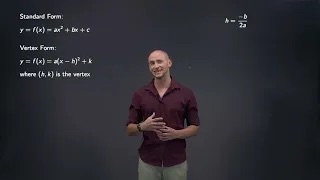
Discussing properties of quadratic functions including the vertex, domain, range, and end behavior

Explaining the general properties of even and odd root functions

Explaining how to solve radical equations and then solving example problems

Solving equations with even roots and checking the solutions

Solving equations with odd radicals

Solving equations with multiple radicals

Simplifying power and exponential expressions using properties of exponents

Discussing parent functions of rational functions and their properties

Finding horizontal asymptotes for rational functions
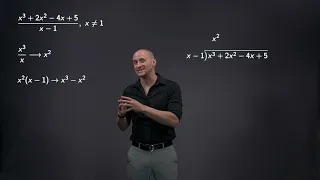
Explaining how to do polynomial long division

Finding horizontal asymptotes for rational functions

Determining the end behavior and horizontal asymptotes for rational functions

Explaining basic algebraic operations for fractions

How to simplify rational expressions

Adding and subtracting rational expressions by finding a common denominator

Explaining how to multiply and divide rational expressions

Performing algebraic operations with rational expressions and simplifying the answer

Solving equations that contain rational expressions

Solving an equation that contains rational expressions

Solving an equation that contains rational expressions

Finding the limit of a sequence

Finding the nth Taylor polynomial of the natural log function centered at 1

Explaining the format and possible solutions for a system of two linear equations

Rewriting a function with a fractional exponent in radical form

Stating the domain in interval notation of a function with radicals, fractions, and exponentials

Calculating continuously compounded interest for money in an account

Find the domain of a function in interval notation with a fraction and logarithm

Finding the size of a population of rabbits with exponential growth

Finding the size of a population of rabbits with exponential decay

Finding the horizontal asymptote of an exponential function

Finding the horizontal asymptote of an exponential function

Finding the horizontal asymptote of an exponential function